#william petersen in every movie
Explore tagged Tumblr posts
Text







William Petersen in FEAR (1996), dir. James Foley
“She knows she screwed up.”
#william petersen#fear#fear 1996#steve walker#william petersen in every movie#billy goes shirtless#not gg#i wish to make pretty things#*hollygl125#my gifs#film#movies#cinema#cinemapix#cinematicsource#fyeahmovies#dailyflicks#filmblr#filmgifs#filmedit#movieedit#moviegifs#cinematv#tvandfilm#filmtvcentral#tvfilmsource#tvfilmedit
102 notes
·
View notes
Text
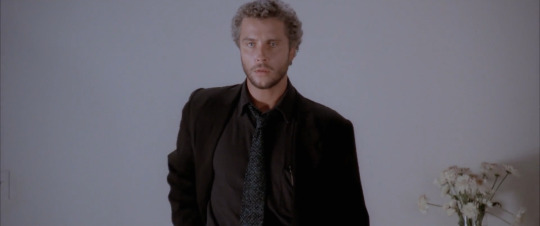


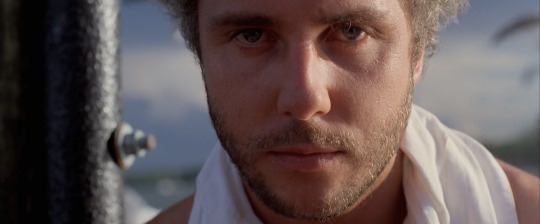
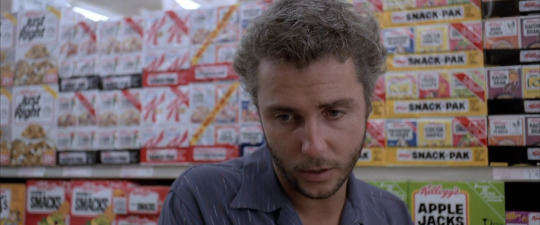


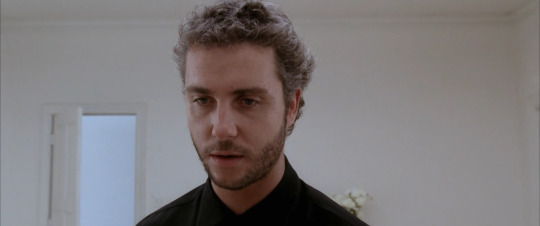
William Petersen as Will Graham in Manhunter (1986)
#films#this is the stupidest critique i've ever made but william petersen was too hot to be will graham. ye know what i mean?#idk maybe i need to reread red dragon too bc i don't know will graham as a character that initimately (INTIMATELY??????) anymore#and maybe it's too much exposure to hugh dancy will but idk the will i rmr isn't supposed to be this cool and swag. idk maybe that's just m#i love william petersen tho <3 funnily enough i had the urge to rewatch fear after this (bc of the setting. for some reason?) and when#i looked it up he was the dad in it omg???? i used to have a crush on him!#but i hated that movie so much i must have repressed every memory of it except my hatred for mark wahlberg#anyway#william petersen as will graham you have to stop you smoke too tough your swag too different your bitch too bad they'll kill you#btw that wasn't a diss to other wills btw i love my wills the way he gets into the mind of who hes pursuing is just too funny to me.#i think it should look more painful for him 🚬
13 notes
·
View notes
Text
Just for fun I thought I’d make a list of Jonathan Tucker’s worst roles and why
Errol Grey in God is a Bullet — I really dislike this movie and I tried rewatching it recently but even his character in it (who is just too much in every way) isn’t worth the pain of sitting through this gratuitously violent schlock. Everyone acts so cartoony in it. I know some people like it but it’s not my cup of tea.
Mitchel McCabe in Sweet Virginia — What in the three minute cameo was that? Boo 👎
David in The Next Three Days — I’m fairly certain he also doesn’t like this role. 15 minutes of being a hostage and then a long drawn out dying scene. Waste of time and talent.
Mike Deerfield in In the Valley of Elah — He’s really good in it but the plot is so depressing that it’s a one and done for me.
Peter Arnz in CSI: Crime Scene Investigation — Just now realized that the OG Will Graham (William Petersen) is in this. In terms of guest appearances, this one was probably the least exciting but it’s #5 because I’d still rewatch it just for them two together. Waitttt, I’m rewatching the episode right now and mmm he’s acting like a young Matthew Brown. Having second thoughts about this one („ಡωಡ„)


#ahhh he’s playing an intelligent psychopath who tried to kill his parents#they’re flirting btw#and quoting asimov to each other#new brownham au unlocked#jonathan tucker
13 notes
·
View notes
Text
I don’t know William Petersen obviously but every character I’ve watched him play in a movie, no matter how different the plot is from each other, his character seems to just be simmering with rage at all times. Even when he’s playing a lovable rascal in a rom com
#it’s why I prefer Ed norton’s will graham. he acts more human#we won’t speak of Hugh dancy’s will who seems to be a completely different person than the character in the book
0 notes
Text
Holidays 12.17
Holidays
Accession Day (Bahrain)
Anti-Bullying Day (New Brunswick, Canada)
Australian Christmas (in “Team Fortress 2”)
Clean Air Day
Cork Day (French Republic)
Day of Ancient Briton
Day of Belarusian Cinema (Belarus)
Declaration of the Rights of Peasants Anniversary Day
Depp Movie Night
Druk Gyalpo National Day (Bhutan)
Flag Day (Kurdistan)
International Day To End Violence Against Sex Workers
International Jewish Book Day [5th Day of Tevet]
International Talk with a Fake British Accent Day
John Greenleaf Whittier Day
Loki’s Birthday
MegaMan Day
National Day (Bahrain, Bhutan, Qatar)
National Device Appreciation Day
National Heroes and Heroines Day (Anguilla)
National Pensioners Day (India)
National Say It Now Day
Pan American Aviation Day
Revolution and Youth Day (Tunisia)
The Simpsons Day
Sow Day (Orkney Islands)
State Executive Service Day (Ukraine)
Take a New Year’s Resolution to Stop Smoking
Whittier Day
Wright Brothers Day
Yuletide Lad #6 arrives (Askasleikir or Bowl-Licker; Iceland)
Food & Drink Celebrations
Cookie Cutter Day
Kakans Dag (Cookie Day; Sweden)
National Growler Day [dates varies]
National Maple Syrup Day
Independence & Related Days
Altavia (Declared; 2019) [unrecognized]
El Dorado (Declared; 2007) [unrecognized]
Ellesmere (Declared; 2018) [unrecognized]
Zenrax (Declared; 1999) [unrecognized]
3rd Tuesday in December
Christmas Cookie House Day [3rd Tuesday]
Taco Tuesday [Every Tuesday]
Tapas Tuesday [3rd Tuesday of Each Month]
Target Tuesday [Every Tuesday]
Tater Tot Tuesday [Every Tuesday]
Trivia Tuesday [Every Tuesday]
Trusting Tuesday [3rd Tuesday of Each Month]
Two For Tuesday [Every Tuesday]
Weekly Holidays beginning December 17 (3rd Full Week of December)
Saturnalia (Ancient Rome) [thru 12.23]
Festivals Beginning December 17, 2024
Kosher Food and Wine Experience (Miami, Florida)
Take a New Year’s Resolution to Stop Smoking Month (thru 2.5.2025) [51 Days]
Feast Days
Barbaras (Christian; Saint)
Begga (Christian; Saint)
Bergmann (Positivist; Saint)
Conchobor Mac Nessa (Celtic Book of Days)
Daniel the Prophet (Christian; Saint)
Edward Meneeley (Artology)
Feast of Babalu Aye (Healer of Deadly Diseases; Yoruba/Santeria)
Feast of the Fairy Godmothers (Shamanism)
Ford Madox Ford (Writerism)
Hagoita Ichi (Sensoji Temple, Japan)
Irving Petlin (Artology)
John Greenleaf Whittier (Writerism)
John Kennedy Toole (Writerism)
Josef Lada (Artology)
Josep Manyanet i Vives (Christian; Saint)
Lazarus of Bethany (Christian; Saint) [Cuba]
Little Bird (Muppetism)
Martyrdom Day of Sri Guru Tag Bahadur Ji (Punjab, India)
Martyrdom of Hazrat Fatemeh (Iran)
Olympias the Deaconess (Christian; Saint)
O Sapientia (1st O Antiphon or Great Advent Antiphon; Christian) [O Wisdom; 1 of 7]
Paul Cadmus (Artology)
Paul César Helleu (Artology)
Procession of Agnios Dionysios (Greece)
Wivina (Christian; Saint)
Sacco & Vanzetti Day (Church of the SubGenius; Saint)
Saturnalia begins (Ancient Rome) [thru 12.23]
Saturnalia Day 1: Day of Saturn (Pagan)
Sloth Day (Pastafarian)
Sturm (Christian; Saint)
Vilhelm Petersen (Artology)
William Safire (Writerism)
Lucky & Unlucky Days
Perilous Day (13th Century England) [32 of 32]
Sakimake (先負 Japan) [Bad luck in the morning, good luck in the afternoon.]
Premieres
All That Glitters or Baby, It’s Gold Outside (Rocky & Bullwinkle Cartoon, S5, Ep. 239; 1963)
An American Tragedy, by Theodore Dreiser (Novel; 1925)
The Bear Who Slept Through Christmas (DePatie-Freleng Animated TV Special; 1973)
Behind the Green Door (Adult Film; 1972)
Boris Wheels and Deals or A Profit Without Honor (Rocky & Bullwinkle Cartoon, S5, Ep. 240; 1963)
Bosko’s Woodland Daze (WB LT Cartoon; 1932)
The Captain’s Christmas, featuring The Captain and the Kids (MGM Cartoon; 1938)
Chicken Little (Disney Cartoon; 1943)
Count Me Out (WB MM Cartoon; 1938)
The Dark Crystal (Film; 1982)
Diamonds Are Forever (US Film; 1971) [James Bond #7]
Fowl Play (Fleischer Popeye Cartoon; 1937)
The Front Page (Film; 1974)
Heart of a Dog, by Mikhail Bulgakov (Novel; 1925)
Helter Skelter: The True Story of the Manson Murders, by Vincent Bugliosi (True Crime; 1974)
The Hobbit: The Battle of the Five Armies (Film; 2014) [Hobbit #3]
The Hopeful Donkey (Terrytoons Cartoon; 1943)
Hunky Dory, by David Bowie (Album; 1971)
King Kong (Film; 1976)
Lassie Come-Home by Eric Knight (Short Story; 1938)
Laughter in the Dark, by Vladimir Nabokov (Novel; 1932)
Life on Mars, by David Bowie (Song; 1971)
Lighter Than Hare (WB MM Cartoon; 1960)
The Loose Nut (Woody Woodpecker Cartoon; 1945)
Magnolia (Film; 1999)
The Man Who Would Be King (Film; 1975)
Molly Moo-Cow and Rip Van Winkle (Rainbow Parade Cartoon; 1935)
Monster (Film; 2003)
Mother/Android (Film; 2021)
A Muppets Christmas: Letters to Santa (TV Special; 2008)
A New Villain, Parts 3 & 4 (Underdog Cartoon, S3, Eps. 27 & 28; 1967)
Nightmare Alley (Film; 2021)
No Ifs, Ands or Butts (Noveltoons Cartoon; 1954)
The Old Shell Game (Noveltoons Cartoon; 1948)
Pappy’s Puppy (WB MM Cartoon; 1955)
Porky the Gob (WB LT Cartoon; 1938)
Rabid Rider (WB LT Cartoon; 2010)
Radio, Radio, by Elvis Costello, performed live on SNL instead of the approved Less Than Zero, getting himself banned (Song; 1977)
The Return of the King (Film; 2003) [Lord of the Rings #3]
Seasin’s Greetinks! (Fleischer Popeye Cartoon; 1933)
The Simpsons (Animated TV Series; 1989)
Sleeper (Film; 1973)
Spanglish (Film; 2004)
Spider-Man: No Way Home (Film; 2021)
The Stand (TV Mini-Series; 2020)
Stuart Little (Film; 1999)
Symphony No. 8, “The Unfinished Symphony,” by Franz Schubert (Symphony; 1865)
The Tender Bar (Film; 2021)
Tobacco Road, by Erskine Caldwell (Novel; 1932)
Tootsie (Film; 1982)
Trail of the Pink Panther (Film; 1982)
Tron: Legacy (Film; 2010)
The Ugly Duckling (Silly Symphony Disney Cartoon; 1931)
The Wanting Seed, by Anthony Burgess (Novel; 1962)
What’s Eating Gilbert Grape (Film; 1989)
Wind & Wuthering, by Genesis (Album; 1976)
Woody Meets Davy Crewcut (Woody Woodpecker Cartoon; 1956)
Yes Man (Film; 2008)
Yogi Bear (Film; 2010)
Today’s Name Days
Jolanda, Lazarus, Viviana (Austria)
Dana, Danail, Danaila, Daniela (Bulgaria)
Hijacint, Lazar, Modest (Croatia)
Daniel (Czech Republic)
Albina (Denmark)
Rahel, Raili (Estonia)
Raakel (Finland)
Adélaïde, Gaël, Judicaël, Olympe (France)
Jolanda, Lazarus, Viviana (Germany)
Daniel, Dionysis, Iakhos (Greece)
Lázár, Olimpia (Hungary)
Lazzaro (Italy)
Brunhilde, Hilda, Teiksma (Latvia)
Drovydė, Jolanta, Mantgailas, Olimpija (Lithuania)
Inga, Inge (Norway)
Florian, Jolanta, Łazarz, Olimpia, Warwara, Żyrosław (Poland)
Daniel (Romania)
Varvara (Russia)
Kornélia (Slovakia)
Lázaro, Yolanda (Spain)
Stig (Sweden)
Daniel (Ukraine)
Eleazar, Lazar, Lazaro, Lazarus, Olympia, Orval, Orville, Storm, Stormie, Stormy, Wilbert, Wilberta, Wilbur (USA)
Today is Also…
Day of Year: Day 352 of 2024; 14 days remaining in the year
ISO: Day 2 of Week 51 of 2024
Celtic Tree Calendar: Ngetal (Reed) [Day 24 of 28]
Chinese: Month 11 (Bing-Zi), Day 17 (Yi-Mao)
Chinese Year of the: Dragon 4722 (until January 29, 2025) [Wu-Chen]
Hebrew: 16 Kislev 5785
Islamic: 15 Jumada II 1446
J Cal: 22 Black; Oneday [22 of 30]
Julian: 4 December 2024
Moon: 92%: Waning Gibbous
Positivist: 16 Bichat (13th Month) [Davy / Priestley]
Runic Half Month: Jara (Year) [Day 11 of 15]
Season: Autumn or Fall (Day 86 of 90)
Week: 3rd Full Week of December
Zodiac: Sagittarius (Day 26 of 30)
1 note
·
View note
Text
Holidays 12.17
Holidays
Accession Day (Bahrain)
Anti-Bullying Day (New Brunswick, Canada)
Australian Christmas (in “Team Fortress 2”)
Clean Air Day
Cork Day (French Republic)
Day of Ancient Briton
Day of Belarusian Cinema (Belarus)
Declaration of the Rights of Peasants Anniversary Day
Depp Movie Night
Druk Gyalpo National Day (Bhutan)
Flag Day (Kurdistan)
International Day To End Violence Against Sex Workers
International Jewish Book Day [5th Day of Tevet]
International Talk with a Fake British Accent Day
John Greenleaf Whittier Day
Loki’s Birthday
MegaMan Day
National Day (Bahrain, Bhutan, Qatar)
National Device Appreciation Day
National Heroes and Heroines Day (Anguilla)
National Pensioners Day (India)
National Say It Now Day
Pan American Aviation Day
Revolution and Youth Day (Tunisia)
The Simpsons Day
Sow Day (Orkney Islands)
State Executive Service Day (Ukraine)
Take a New Year’s Resolution to Stop Smoking
Whittier Day
Wright Brothers Day
Yuletide Lad #6 arrives (Askasleikir or Bowl-Licker; Iceland)
Food & Drink Celebrations
Cookie Cutter Day
Kakans Dag (Cookie Day; Sweden)
National Growler Day [dates varies]
National Maple Syrup Day
Independence & Related Days
Altavia (Declared; 2019) [unrecognized]
El Dorado (Declared; 2007) [unrecognized]
Ellesmere (Declared; 2018) [unrecognized]
Zenrax (Declared; 1999) [unrecognized]
3rd Tuesday in December
Christmas Cookie House Day [3rd Tuesday]
Taco Tuesday [Every Tuesday]
Tapas Tuesday [3rd Tuesday of Each Month]
Target Tuesday [Every Tuesday]
Tater Tot Tuesday [Every Tuesday]
Trivia Tuesday [Every Tuesday]
Trusting Tuesday [3rd Tuesday of Each Month]
Two For Tuesday [Every Tuesday]
Weekly Holidays beginning December 17 (3rd Full Week of December)
Saturnalia (Ancient Rome) [thru 12.23]
Festivals Beginning December 17, 2024
Kosher Food and Wine Experience (Miami, Florida)
Take a New Year’s Resolution to Stop Smoking Month (thru 2.5.2025) [51 Days]
Feast Days
Barbaras (Christian; Saint)
Begga (Christian; Saint)
Bergmann (Positivist; Saint)
Conchobor Mac Nessa (Celtic Book of Days)
Daniel the Prophet (Christian; Saint)
Edward Meneeley (Artology)
Feast of Babalu Aye (Healer of Deadly Diseases; Yoruba/Santeria)
Feast of the Fairy Godmothers (Shamanism)
Ford Madox Ford (Writerism)
Hagoita Ichi (Sensoji Temple, Japan)
Irving Petlin (Artology)
John Greenleaf Whittier (Writerism)
John Kennedy Toole (Writerism)
Josef Lada (Artology)
Josep Manyanet i Vives (Christian; Saint)
Lazarus of Bethany (Christian; Saint) [Cuba]
Little Bird (Muppetism)
Martyrdom Day of Sri Guru Tag Bahadur Ji (Punjab, India)
Martyrdom of Hazrat Fatemeh (Iran)
Olympias the Deaconess (Christian; Saint)
O Sapientia (1st O Antiphon or Great Advent Antiphon; Christian) [O Wisdom; 1 of 7]
Paul Cadmus (Artology)
Paul César Helleu (Artology)
Procession of Agnios Dionysios (Greece)
Wivina (Christian; Saint)
Sacco & Vanzetti Day (Church of the SubGenius; Saint)
Saturnalia begins (Ancient Rome) [thru 12.23]
Saturnalia Day 1: Day of Saturn (Pagan)
Sloth Day (Pastafarian)
Sturm (Christian; Saint)
Vilhelm Petersen (Artology)
William Safire (Writerism)
Lucky & Unlucky Days
Perilous Day (13th Century England) [32 of 32]
Sakimake (先負 Japan) [Bad luck in the morning, good luck in the afternoon.]
Premieres
All That Glitters or Baby, It’s Gold Outside (Rocky & Bullwinkle Cartoon, S5, Ep. 239; 1963)
An American Tragedy, by Theodore Dreiser (Novel; 1925)
The Bear Who Slept Through Christmas (DePatie-Freleng Animated TV Special; 1973)
Behind the Green Door (Adult Film; 1972)
Boris Wheels and Deals or A Profit Without Honor (Rocky & Bullwinkle Cartoon, S5, Ep. 240; 1963)
Bosko’s Woodland Daze (WB LT Cartoon; 1932)
The Captain’s Christmas, featuring The Captain and the Kids (MGM Cartoon; 1938)
Chicken Little (Disney Cartoon; 1943)
Count Me Out (WB MM Cartoon; 1938)
The Dark Crystal (Film; 1982)
Diamonds Are Forever (US Film; 1971) [James Bond #7]
Fowl Play (Fleischer Popeye Cartoon; 1937)
The Front Page (Film; 1974)
Heart of a Dog, by Mikhail Bulgakov (Novel; 1925)
Helter Skelter: The True Story of the Manson Murders, by Vincent Bugliosi (True Crime; 1974)
The Hobbit: The Battle of the Five Armies (Film; 2014) [Hobbit #3]
The Hopeful Donkey (Terrytoons Cartoon; 1943)
Hunky Dory, by David Bowie (Album; 1971)
King Kong (Film; 1976)
Lassie Come-Home by Eric Knight (Short Story; 1938)
Laughter in the Dark, by Vladimir Nabokov (Novel; 1932)
Life on Mars, by David Bowie (Song; 1971)
Lighter Than Hare (WB MM Cartoon; 1960)
The Loose Nut (Woody Woodpecker Cartoon; 1945)
Magnolia (Film; 1999)
The Man Who Would Be King (Film; 1975)
Molly Moo-Cow and Rip Van Winkle (Rainbow Parade Cartoon; 1935)
Monster (Film; 2003)
Mother/Android (Film; 2021)
A Muppets Christmas: Letters to Santa (TV Special; 2008)
A New Villain, Parts 3 & 4 (Underdog Cartoon, S3, Eps. 27 & 28; 1967)
Nightmare Alley (Film; 2021)
No Ifs, Ands or Butts (Noveltoons Cartoon; 1954)
The Old Shell Game (Noveltoons Cartoon; 1948)
Pappy’s Puppy (WB MM Cartoon; 1955)
Porky the Gob (WB LT Cartoon; 1938)
Rabid Rider (WB LT Cartoon; 2010)
Radio, Radio, by Elvis Costello, performed live on SNL instead of the approved Less Than Zero, getting himself banned (Song; 1977)
The Return of the King (Film; 2003) [Lord of the Rings #3]
Seasin’s Greetinks! (Fleischer Popeye Cartoon; 1933)
The Simpsons (Animated TV Series; 1989)
Sleeper (Film; 1973)
Spanglish (Film; 2004)
Spider-Man: No Way Home (Film; 2021)
The Stand (TV Mini-Series; 2020)
Stuart Little (Film; 1999)
Symphony No. 8, “The Unfinished Symphony,” by Franz Schubert (Symphony; 1865)
The Tender Bar (Film; 2021)
Tobacco Road, by Erskine Caldwell (Novel; 1932)
Tootsie (Film; 1982)
Trail of the Pink Panther (Film; 1982)
Tron: Legacy (Film; 2010)
The Ugly Duckling (Silly Symphony Disney Cartoon; 1931)
The Wanting Seed, by Anthony Burgess (Novel; 1962)
What’s Eating Gilbert Grape (Film; 1989)
Wind & Wuthering, by Genesis (Album; 1976)
Woody Meets Davy Crewcut (Woody Woodpecker Cartoon; 1956)
Yes Man (Film; 2008)
Yogi Bear (Film; 2010)
Today’s Name Days
Jolanda, Lazarus, Viviana (Austria)
Dana, Danail, Danaila, Daniela (Bulgaria)
Hijacint, Lazar, Modest (Croatia)
Daniel (Czech Republic)
Albina (Denmark)
Rahel, Raili (Estonia)
Raakel (Finland)
Adélaïde, Gaël, Judicaël, Olympe (France)
Jolanda, Lazarus, Viviana (Germany)
Daniel, Dionysis, Iakhos (Greece)
Lázár, Olimpia (Hungary)
Lazzaro (Italy)
Brunhilde, Hilda, Teiksma (Latvia)
Drovydė, Jolanta, Mantgailas, Olimpija (Lithuania)
Inga, Inge (Norway)
Florian, Jolanta, Łazarz, Olimpia, Warwara, Żyrosław (Poland)
Daniel (Romania)
Varvara (Russia)
Kornélia (Slovakia)
Lázaro, Yolanda (Spain)
Stig (Sweden)
Daniel (Ukraine)
Eleazar, Lazar, Lazaro, Lazarus, Olympia, Orval, Orville, Storm, Stormie, Stormy, Wilbert, Wilberta, Wilbur (USA)
Today is Also…
Day of Year: Day 352 of 2024; 14 days remaining in the year
ISO: Day 2 of Week 51 of 2024
Celtic Tree Calendar: Ngetal (Reed) [Day 24 of 28]
Chinese: Month 11 (Bing-Zi), Day 17 (Yi-Mao)
Chinese Year of the: Dragon 4722 (until January 29, 2025) [Wu-Chen]
Hebrew: 16 Kislev 5785
Islamic: 15 Jumada II 1446
J Cal: 22 Black; Oneday [22 of 30]
Julian: 4 December 2024
Moon: 92%: Waning Gibbous
Positivist: 16 Bichat (13th Month) [Davy / Priestley]
Runic Half Month: Jara (Year) [Day 11 of 15]
Season: Autumn or Fall (Day 86 of 90)
Week: 3rd Full Week of December
Zodiac: Sagittarius (Day 26 of 30)
1 note
·
View note
Text
Comfort Characters
Rules: post your top 5 favourite comfort characters
I was tagged by the absolutely wonderful @lovebillyhargrove thank you so much 💜💜💜
1. Harringrove 😗😛

I know I’m cheating but I can’t really think about one without the other these days, by the end of season one I knew that I’d die for Steve Harrington and that love has only grown stronger as Stranger Things (2016-) has progressed, the only person who loves Steve Harrington more than me is Billy Hargrove. And Billy Hargrove what an asshole, I love him 🥰🥰🥰
2. Will Graham

Everyone’s favourite little sassy murder muffin, I’ve loved him since I was fourteen and read Red Dragon for the first time, my favourite depictions are the wonderfully intense portrayal by William Petersen in Manhunter (1986) and of course the fantastic Hugh Dancy in the blood soaked aesthetic murder opera that is Hannibal (2013-2015), a show that feels like a fever dream, that it shouldn’t exist but I am eternally grateful that it does 🥳🥳🥳
3. Monsieur Hercule Poirot (with his husband Arthur Hastings and their best friends James Japp and Felicity Lemon)

I can’t even begin to explain how much I love Poirot and friends, Agatha Christie created an amazing character in the little fussy Belgian detective, there have been many great adaptations of his stories, it’s impossible not to love Peter Ustinov, John Moffat in the BBC radio dramas but the ITV series that ran from 1989-2013 is pure comfort tv at it’s finest ☺️☺️☺️
4. Carrie White

I would take Carrie to the prom every time, I first saw this film when I was seven and I fell in love so hard, Carrie (1976) was the beginning of my love of horror, it is quite 70s but I love the aesthetic, the music and the performances, has anyone ever portrayed vulnerability like Sissy Spacek, someone who goes from timid to terrifying over the course of an evening maybe but not like Sissy in Carrie 🥺🐷🔥
5. Tom Servo (I love Cambot, Gypsy and Crow too)

I love MST3K so much that it’s practically become a vocabulary for me I quote it so much and they’ve created a love for entertainingly bad movies. I love all the bots but Tom Servo is my favourite, I love his wit, his wonderful voice and how pretentious he is and he’s so goddamn cute 🤖🤖🤖
Tagging: Anyone who would like to do it (it's really hard to only pick five 😳😳😳) 💁🏼♀️💁🏼♀️💁🏼♀️
#tagging game#comfort characters#lovebillyhargrove#so hard to only pick five#honourable mentions#harold and maude#eddie kaspbrak#robocop#clarice starling#orignal series star trek#mulder and scully#everyone from clue (1985)#the golden girls#atticus finch#I could go on forever#so i'll stop here
13 notes
·
View notes
Text
Right, let me start off by saying this is in no way meant as me throwing digs at Red Dragon (2002) or NBC’s Hannibal. It’s just me talking about an earlier version of the Will Graham and Hannibal Lecter dynamic.
I think Manhunter has one of the most perfectly executed single scenes in any movie.
Will and Hannibal are only in two scenes together. One is face-to-face and the other is a phone call. I love the phone call, don’t get me wrong, but I think the face-to-face meeting is so epic.
This one scene tells us so much about their dynamic without really getting too in-depth with it. Yes we do get details about the basic gist of what happened. But we don’t see any flashbacks like Red Dragon or two and a half seasons worth of backstory like in Hannibal. It’s just this one scene.
William Petersen is a phenomenal Will Graham.

(yet again the only actor I don’t buy as Will is Edward Norton... he wasn’t bad, I just didn’t buy him as Will as well as I did with Peterson and Dancy) You see just how uncomfortable he is just being in Hannibal’s presence. The details are never really given but it is so clear that whatever happened between the two of them has Will scarred for life.
And then there’s Brian Cox as Hannibal.

He gets the reputation of being the most realistic Hannibal Lecter, and I agree with that reputation. He’s calm, not acting too proper or fancy (no offense to Hopkins or Mikkelsen) and he seems like a regular guy you’d meet in town. And that’s what makes this ‘reunion’ with Will all the more terrifying and tragic. He’s not doing anything that conventionally terrifying, he’s not making any physical threats, but it’s just blatant emotional manipulation. And it’s so casual too! Hannibal just zeroes in on Will the second he starts talking.
It’s just... god, this scene is so good! It only lasts less than five minutes but it’s so effective at establishing this dynamic. Will is clearly traumatised by what happened and wants to get out of there as quickly as possible, and Hannibal clearly hates Will but is like “oh, I’m going to fuck with your mind so much and I’m going to love every. single. second. of it.”
Honestly, this movie is really underrated in general.
10 notes
·
View notes
Text
They say that your music says a lot about you: Put a playlist on shuffle and post the first 10 songs
(This idea isn’t mine I’m just doing my own because the other one was super long)
Up Is Down by Hans Zimmer no suprises there. hans zimmer is the man.
Rey’s Theme- John Williams I loved this song after hearing the first few notes in theaters
I’ll Make A Man Out of You from Mulan Can never keep myself from singing out loud.
Be Kind to Yourself by Andrew Petersen Ok, this is where I need to clarify what this playlist is: The title is I Don’t Need Any Calming Tea!...yes I do. I created it after an especially bad night at work. I won’t go into details about that here, but basically all of these songs are to either get rid of the energy I have or channel it into something better. This song was suggested by a friend and I tear up whenever I hear it.
Angelica by Hans Zimmer and Rodrigo y Gabriela This soundtrack helped me get through middle school, and also I’m a sucker for the spanish guitar.
Walk the Plank by Klaus Bedalt Yeah, a lot of pirates music here. This one always gets me going when I need it most
Royals by Lorde One of only a few songs that both remind me of marching band/ color guard, and doesn’t make me depressed. Such an awesome song
You’ll Be In My Heart by Phil Collins My mom used to sing this to me to go to sleep. Also, this movie is amazing and Phil Collins didn’t have to go this hard on the music but he did.
Trashin’ the Camp from Tarzan Yeah Tarzan is in my top 5 Disney movies, if you can’t tell.
Sir Duke by Stevie Wonder I didn’t listen to Stevie Wonder until this past year, and I wish I had before because his songs are amazing! This one especially gets me dancing every time.
Alright so, there we go, there’s me in a playlist. Anyone that wants to do this go right ahead. It’s kinda fun.. Also I’ve got a ton more songs on this playlsit so if you want I can do a part 2
2 notes
·
View notes
Text
MOVIE REVIEW {THE PERFECT STORM}
The Perfect Storm is a 2000 American biographical disaster drama film directed by Wolfgang Petersen and based on the 1997 non-fiction book of the same name by Sebastian Junger. The film tells the story of the Andrea Gail, a commercial fishing vessel that was lost at sea with all hands after being caught in the Perfect Storm of 1991. It was released on June 30, 2000, by Warner Bros.
CHARACTERS
William “Billy” Tyne, Jr (George Clooney) - captain of the sword fishing boat, Andrea Gail
Robert “Bobby” Shatford (Mark Wahlberg) - A husband who wants to earn enough money for his Family
David "Sully" Sullivan (William Fichtner) - A crew of Andrea Gail
Linda Greenlaw (Mary Elizabeth Mastrantonio) - the captain of Hannah Boden
Dale "Murph" Murphy (John C. Reilly) -a veteran fisherman who is divorced with a son with whom he's very involved. Also a crew of Andrea Gail.
Christina "Chris" Cotter (Diane Lane) -girlfriend of Bobby Shatford. She does not want Bobby to go on the trip because of a bad feeling she has about it.
Mike 'Bugsy' Moran (John Hawkes) -A crew of Andrea Gail
Alfred Pierre (Allen Payne) - A crew of Andrea Gail
Bob Brown (Michael Ironside) -Owner of Andrea Gail and Hannah Boden
SUMMARY
It was Autumn of 1991 when the fishing boat Andrea Gail touches the port of Gloucester,Massachusetts.For so many days in the ocean,at last they reached the land.The crew was very happy to see their family again.There was a party and everyone enjoys it.But the happiness was temporary because Captain Billy announced to his crew for a late season fishing expedition because they have poor catch in their last expedition.The crew agrees because they want more money for there family.The expedition heads to Grand Banks, their usual fishing area.But the fish they caught wasn't enough, so they go to the Flemish Cap were they caught so many fishes and they are happy because there is a lot of money coming ahead. But sadly their ice machine break and the Captain of Andrea Gail decided to go home so that they can sell the fish they caught. But there is a developing storm coming to their way home. After debating whether they sail through the developing storm or to wait until the storm were gone, the crew decided to go home and take the risk of the storm. They underestimated the strenght of the storm.
Many ship warn the Andrea Gail not to go through because the storm become so powerful. Billy, the captain of the ship carefully manage the ship because there are so many big waves and whirling winds in their way. After so many big waves punches the Andrea Gail her antenna broke and the communication were stopped. And that is the lead to a Mayday call coming from the captain of Hannah Boden and an helicopter response to her call. But they fail to rescue the crew of Andrea Gail because because they are out of fuel. The helicopter crew ditch their aircraft because it can't fly anymore. One by one the crew of the helicopter jump into the water and the US Coast Guard rescue them.
The plan of Andrea Gail to go home wasn't complete because of the problem that they encounter and the crew was exhausted. The Captain decide to go back to the Flemish Cap and wait until the storm were gone. But it was not successful because the Andrea Gail didn't manage her balance and splash away by the big wave. Four crew of the Andrea Gail were trapped and only Billy and Bobby manage to get out of the ship. But Billy decide to go down with his ship. Only Bobby make it to go to the surface and watched Andrea Gail sinking. As Bobby says his goodbye to his love ones the rogue waves washed him off and never seen again. After the storm there is a rescue operation but sad to say that the all crews were not found.
REVIEW
The perfect storm such a very good movie. The.combination of a science fiction,adventurous and a good for family movie. The camera angles and the musical effect gives a movie a realistic effect. Also, the actors and the actresses give their best.to become more dramatic in every scene.
The sequence of the story is also good and it is planned very well. The pictures,lights and sounds also at their place too,where you can obviously notice it. Also, the scenery in the film is such a wonderful because of the effects and the lights that put to it.
Over-all the movie is indeed a successful one. You can enjoy watching.it and be amaze to the beauty of it. You will be educated how the life at sea is and how you will do if you are at there situation too. It gives you the lesson that if you have a unity you can achieve more.
REACTION
The perfect storm is such a wonderful movie. i liked the combination of tragic and adventurous theme of the film. the film shows how is the at is,as a future seafarer. it thought me that the life at sea is difficult and challenging. Also, the movie show the unity of the crew in times of emergency.
I recommend this movie to the persons who has a dream to become a seafarer someday and also to the person who loves to watch science-fiction movie. Indeed it is a good movie that you cant wait to see.
LESSON LEARNED
Life at sea is difficult if you are alone you must have you crew in order to follow the flow of the waves. The lesson that I've learned in this movie is that you must have a unity in order to reach your goal and to survive in life.
As we can see in the movie. At first, there is no unity in the crew of the ship and their is always a fight between the crew. But they manage to fixed because in the first place they they are friends. So we must have a unity.
In order for us to become successful we must true to our self and to the person around us. And we must have a unity to reached it.
REFERENCE
https://en.wikipedia.org/wiki/The_Perfect_Storm_(film)
2 notes
·
View notes
Text
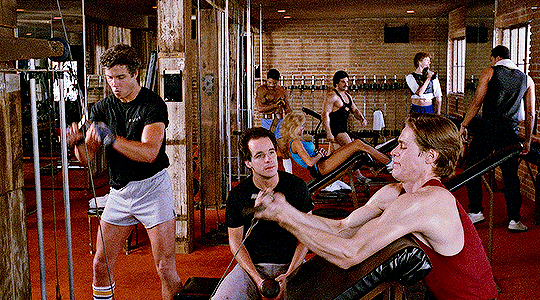
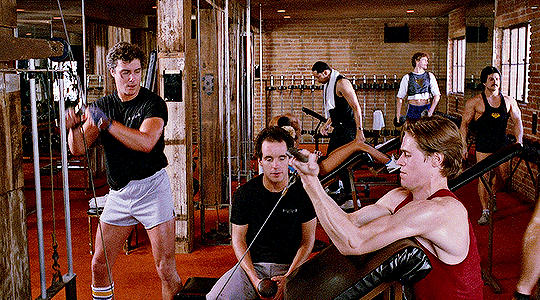
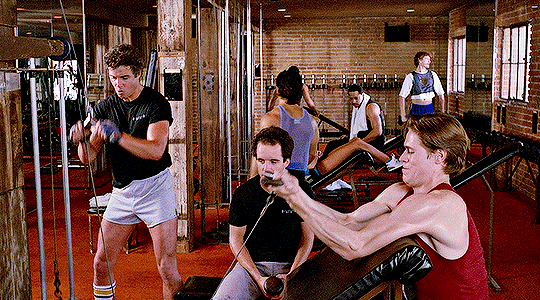
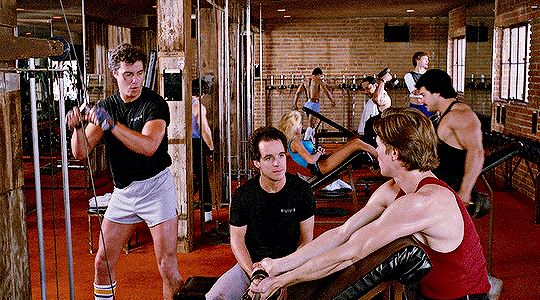
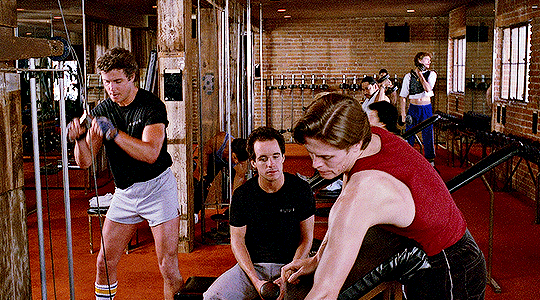
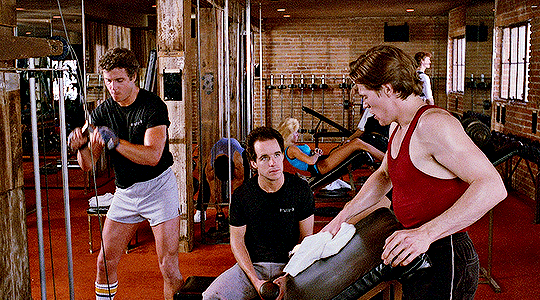
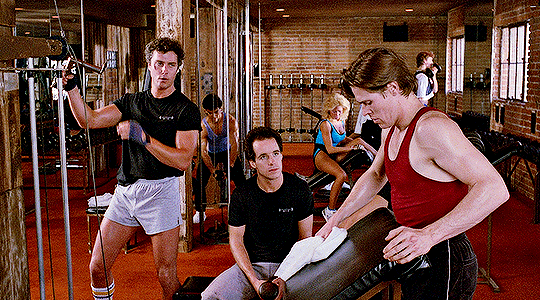
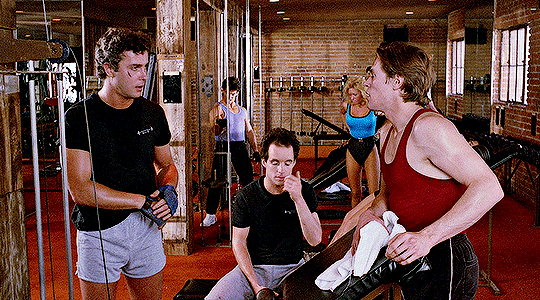
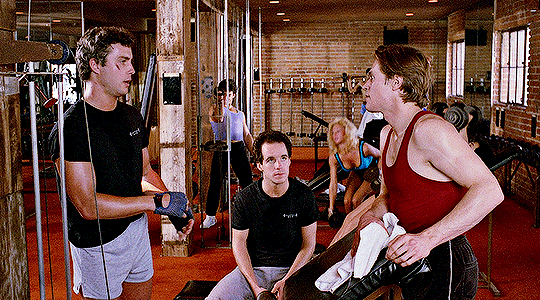
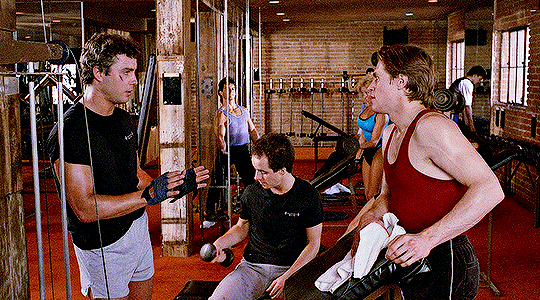
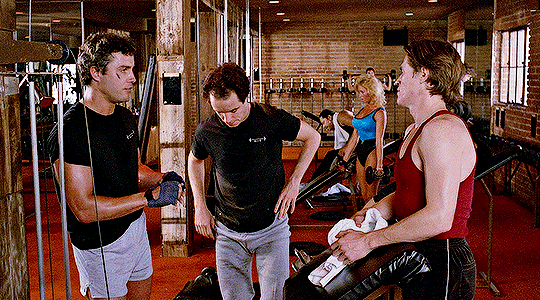
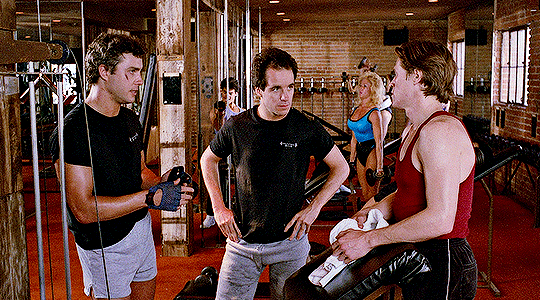
William Petersen in TO LIVE AND DIE IN L.A. (1985), dir. William Friedkin SHORT SHORTS
#william petersen#to live and die in l.a.#to live and die in la#william friedkin#willem dafoe#john pankow#my gifs#i wish to make pretty things#william petersen in every movie#who wears short shorts?#billy wears short shorts#richard chance#not gg#to live and die in three parts#*hollygl125#neo-noir#neo noir#cinema#cinemapix#dailyflicks#film#movies#filmedit#filmgifs#moviegifs#cinematv#tvandfilm#filmtvcentral#tvfilmsource#tvfilmedit
255 notes
·
View notes
Text
Hannibal: Did Author Thomas Harris Try to Destroy Dr. Lecter?
https://ift.tt/3h4huHT
It’s appeared for a while now that Dr. Hannibal Lecter–the forensic psychiatrist, cannibalistic serial killer, and pop culture icon featured in four novels, five movies, and a TV show–has been unstoppable. Several of those projects were highly acclaimed by critics and tremendous hits with audiences. And Anthony Hopkins even earned an Oscar for playing the doctor The Silence of the Lambs, which itself went on to sweep the Academy Awards.
So why did it seem like Thomas Harris, the reclusive author who created Dr. Lecter and wrote the novels, tried his best to kill off the public interest in Hannibal–if not Hannibal himself–at the height of the character’s fame? Because that appears to be almost exactly what Harris attempted to do with Hannibal, the third book featuring the erudite monster, which was published in 1999. Less than two years later, the film version arrived in theaters (20 years ago this week, in fact) and received just as polarizing a response as Harris’ book.
Two decades later, Hannibal, a top shelf, A-list Hollywood production directed by Ridley Scott and featuring Hopkins in his second portrayal of Lecter, remains a bizarre, flawed artifact. Mostly faithful to the equally weird and at times repugnant book, it’s a borderline insane movie that turns the murderous Lecter into ostensibly a hero and, while not going quite off the deep end as the novel, features one of the most gruesomely bonkers climactic scenes ever filmed for a mainstream motion picture. Why?!
Well…
The Road to Hannibal
Harris, now 80 years old and a former journalist for the Associated Press, published his second novel, Red Dragon, in 1981. That story introduced Hannibal Lecter fto the world for the first time. When the book begins, Lecter is already imprisoned for his ghastly crimes, having been caught by the haunted FBI profiler Will Graham. When Graham is called out of retirement to catch another killer, he consults with Dr. Lecter on the case despite the serial killer’s ability to manipulate Graham psychologically. Lecter is very much a supporting character in Red Dragon, which was also reflected in the first film made from the book, Michael Mann’s Manhunter.
Released in 1986, the movie starred William Petersen (CSI: Crime Scene Investigation) as Graham and Scottish actor Brian Cox (Succession) as Lecter (spelled “Lektor” in the movie). Cox is only in a handful of scenes, but makes a strong impression in his few minutes of screen time; both his performance and the film–which was not a success with either critics or audiences in its initial release- have grown in popular stature over the years.
Two years later, in 1988, Harris published his third novel, The Silence of the Lambs. Dr. Lecter is a much larger figure here, as he’s called upon to advise on a new serial killer case by Clarice Starling, an FBI agent in training whose innate decency and compassion stirs respect and even admiration in the otherwise psychopathic doctor. The parallel storylines, the introduction of a superb character in Clarice, and the further development of Lecter, plus the macabre aspects of the narrative made the book an instant classic and one of the great psychological horror novels of its time.
The Silence of the Lambs was a runaway bestseller, but this time the book’s success was equaled by that of its screen adaptation. Jonathan Demme directed the 1991 film based on Harris’ novel, in which Anthony Hopkins played Lecter for the first time, earning for himself both full-fledged movie stardom and an Oscar for Best Actor. Jodie Foster played Clarice, also landing an Oscar for her work; and the movie was just the third in history to sweep all five major awards by also picking up Best Picture, Best Director, and Best Adapted Screenplay.
With the film version of The Silence of the Lambs a box office success, and Lecter entering the pop culture zeitgeist (along with catchphrases like “A nice Chianti…”) as a monster with intelligence, wit and taste, the movie’s producers and the public began to clamor for a sequel.
Hannibal Emerges from His Slumber
It was 11 years before we heard from Thomas Harris and Hannibal Lecter again on the page, with Harris in no rush to deliver a new adventure for the doctor. In his book Making Murder: The Fiction of Thomas Harris, author Philip L. Simpson quotes Harris as saying, “I can’t write it until I believe it.” But in 1999, he finally delivered Hannibal, his longest book to date (484 pages in first edition hardback), and the first in which Lecter is clearly, and perhaps ill-advisedly, the central character.
Taking place seven years after The Silence of the Lambs, the story finds Clarice facing a career crisis when she is blamed for a botched drug raid. But when a letter from Dr. Lecter to Clarice shows up, the FBI puts Clarice back on the doctor’s trail. Meanwhile Lecter is living in Florence under a different identity but is pursued by an Italian detective named Pazzi. The latter aims to collect a huge bounty placed on Lecter’s head by Mason Verger, an incredibly wealthy pedophile who wants revenge on Lecter for disfiguring him during a drug-fueled therapy session years earlier.
To Harris’ credit, Hannibal does not simply retread the same ground as the classic novel that preceded it. According to a new introduction he wrote for Red Dragon, Harris reportedly “dreaded doing Hannibal… dreaded the choices I would have to watch, feared for Starling.” The book is nothing if not filled with dread, and its main theme is that every single human being is capable of corruption, evil, and depravity–a bleak assessment of the species, even for this book series.
Harris expounded upon his theme by making Hannibal his grisliest novel. Lecter murders Pazzi by disemboweling him and hanging him from Florence’s famed Palazzo Vecchio while the hideous-looking Verger, his face and body all but destroyed, plans to enact his vengeance on Lecter by feeding him alive to wild boars. Verger himself meets his end at the hands of his sister, who chokes Verger to death with his pet moray eel–and after violently extracting some of his sperm so she can have a baby with her lesbian partner.
The book ends on its most controversial and polarizing note: Lecter rescues himself and an injured Starling from Verger’s plan, then captures Starling’s nemesis at the Justice Department, Paul Krendler, and prepares a dinner in which he and Starling eat a portion of Krendler’s brain before Lecter kills him. Lecter then digs up the bones of Starling’s father and uses hypnosis to allow her to “see” her father and say goodbye to him, after which Lecter and Starling become lovers and vanish to Buenos Aires.
In the book’s logic, Starling finally accepts the love of the one man in her adult life who has treated her with respect.
What Was Thomas Harris Thinking?
Hannibal, the book, was the second biggest pop culture phenomenon of the summer of 1999 after the release of Star Wars – Episode I: The Phantom Menace. Some 1.5 million copies of the novel were shipped to bookstores. Other publishers, like movie studios getting out of the way of an Avengers flick, shifted their big titles away from June of that year. An advance review from no less an authority than Stephen King called it “one of the two most frightening popular novels of our time,” placing it alongside The Exorcist, in his New York Times review.
Then more critics got to read and review it. So did the public.
The novel, and especially its shockingly subversive ending, scrambled the brains of everyone who read it. An analysis of the book by the influential Kirkus Reviews had positive things to say about Harris’ “baroque new approach” to the serial killer genre and his “audacious epilogue,” but directly compared the Dr. Lecter saga to Star Wars in the sense that both had become a brand.
It was true: in the years since the release of The Silence of the Lambs, Lecter had transformed into a tangible intellectual property, becoming the subject of jokes and parodies, and a meme before we even knew what those were. The terrifying monster of Red Dragon and Silence had become the murderer everyone loved and laughed over–a transition which even Anthony Hopkins reportedly found unfortunate and disturbing.
Read more
Movies
Why Gladiator Continues to Echo Through Eternity
By David Crow
Movies
Best Serial Killer Movies of the ’90s Ranked
By David Crow
Yet it’s worth wondering then if that is the point in Hannibal. Harris is an intensely private person who did not care for the public spotlight. He told the New York Times in 2019, in his only interview in decades, that he found fame to be “more of a nuisance than anything else.” It is easy to imagine he might’ve viewed Hannibal as a way to short-circuit both the overhyped expectations of the public and the evolution of Lecter into some kind of weird fictional celebrity. And perhaps he saw his book as a way of moving past Lecter himself and freeing himself to write new stories?
“I like to think Harris at least partly ups-the-grotesque-ante in Hannibal to rub our collective noses in our collective love for a serial killer,” wrote Patrick J. Sauer in 2019–the book’s 20th anniversary–at Crimereads. “Maybe Harris knew another straight-forward thriller wouldn’t cut it, so he had no choice but to go Grand Guignol on his readers.”
Professor Mark Jancovich of the University of East Anglia (UK), mused in the same article that Harris had other ambitions. “I think Harris might just have wanted to finish Lecter off like Arthur Conan Doyle tried with Sherlock Holmes,” he said. “But there’s also the sense he might have been under huge pressure by the publishers. It’s not really clear what the impetus for the book is, other than the obvious commercial one.”
Whatever Harris tried to do with Hannibal, it doesn’t really work. While the book is gripping and the prose precise, making Dr. Lecter the ostensible protagonist is a mistake. We learn more about his background for one thing, including the unspeakable death of his younger sister during World War II, but that robs him of being the unknowable, terrifying force of nature that he is in the first two novels.
Meanwhile the once-formidable Starling is reduced to an almost passive supporting role, buffeted around without agency until she just essentially gives up and is saved by Lecter. Maybe Harris really did want to turn off his public so that he would never have to write about Hannibal Lecter again.
Hannibal Now Playing at a Theater Near You
The film rights to Hannibal were snapped up in record time for $10 million by Italian producer Dino de Laurentiis, who had produced Manhunter yet passed on Silence. But there was a problem: Director Jonathan Demme, star Jodie Foster, and screenwriter Ted Tally–all major components of the success of Silence, along with Hopkins–had no interest in coming back after reading the book.
Demme was reportedly disappointed by the novel’s copious gore and skewing of Starling’s character, with Foster also dismayed by the latter. Although she said at the time that she was committed to another project, she later came clean and told Total Film, “Clarice meant so much to Jonathan and I, she really did, and I know it sounds kind of strange to say but there was no way that either of us could really trample on her.”
Hopkins did return, however, and the role of Clarice was recast with Julianne Moore taking the part. According to the “making-of” feature on the DVD, Angelina Jolie, Hilary Swank, and Cate Blanchett were all considered as well. However, Hopkins personally lobbied for Moore after working with her in Surviving Picasso.
“In instances like this, the comparisons are inevitable and of course there’s some apprehension about it, because Jodie was really, really fantastic… I mean, she’s a great actress,” said Moore on the DVD. “But it’s a different movie, so that’s the way I have to approach it.”
An unbilled, unrecognizable Gary Oldman played the disfigured, malevolent Verger, while Ray Liotta took the role of Krendler. Inheriting the director’s chair was Ridley Scott, of Blade Runner, Thelma and Louise and Gladiator fame, while the script was handled initially by David Mamet (Glengarry Glen Ross) and then again by a major Steven Zaillian (Schindler’s List) rewrite. With all that talent, the budget was said to exceed $100 million.
But there was a problem: that ending. While Scott found a certain baroque tone that echoed Harris’ book in some ways, and was perfectly happy to retain the gutting of Detective Pazzi (played by Giancarlo Giannini), the wild boars, and even the cooking of Krendler’s brains by Lecter–a scene which ranks high on the all-time insane list–there was no way the filmmakers were going to alienate audiences by having Clarice Starling eat those brains and then make love to the doctor. Not a chance.
“I couldn’t take that quantum leap emotionally on behalf of Starling,” Ridley Scott told the Guardian at the time. “Certainly, on behalf of Hannibal–I’m sure that’s been in the back of his mind for a number of years. But for Starling, no. I think one of the attractions about Starling to Hannibal is what a straight arrow she is.”
In the film, Clarice does not dine with Lecter and does not fall into the drug-induced hypnosis of the book. With the law closing in on them, Lecter finally professes his love for Starling, and when she manages to handcuff the two of them together so that he cannot escape, he sacrifices either his own hand or at least a finger (it’s never made clear) to slip out of the cuffs and escape into the night.
When we last see him, he’s on a plane to a destination unknown and he’s feeding a slice of leftover Krendler to a young boy seated next to him. Starling remains behind, her future also unknown.
Hannibal, the movie, was released nearly 10 years to the day that The Silence of the Lambs arrived in theaters. The R-rated movie scored $58 million in its opening weekend, the highest opening for a film with that rating until The Passion of the Christ came out in 2004. The movie ended up earning $165 million in the U.S. and a total of $351 million worldwide, good enough for 10th highest gross of that year.
Critics were less kind than audiences, with the film scoring just 39 percent at Rotten Tomatoes. The reviews were split along the same lines as those for the book. While some critics praised the film’s style and audacity, others bemoaned the lack of great character interaction and thematic resonance that made The Silence of the Lambs a masterpiece.
And it was true: Hannibal, as both a movie and a book, exhibits the same strengths and suffers from the same problems. The projects are stylish, exquisitely written/produced, and possessed of a fair amount of black humor and boldness. But putting Lecter front and center, while robbing Starling of her agency and motivation, creates a box from which the story cannot escape. Both characters are offscreen (so to speak) for long stretches while the Verger and Pazzi stories play out, and the story is so damning of essentially all of humanity that it’s hard to get a handle on anybody.
Yet both the book and the movie were monster hits, so if Harris really did intend to stop Lecter in his tracks with that bizarre ending, he failed.
The Aftermath of Hannibal
Producer Dino de Laurentiis insisted on making more Lecter movies. First he ramped up a faithful remake of Red Dragon, this time under its original title and with Hopkins once again in the role of Lecter, joined by Edward Norton as Will Graham and Ralph Fiennes as killer Francis Dolarhyde. Directed by Brett Ratner, the film grossed $93 million in the U.S. and $209 million worldwide, with critics again giving it mixed reviews but actually rating it higher (68 percent) than Hannibal.
De Laurentiis demanded more, and told Harris he’d move forward without him if the author did not wish to be involved. So Harris wrote a novel and a screenplay at the same time: Hannibal Rising, which explored–in excruciating detail–Hannibal’s entire early life, robbing him once and for all of any mystery he might have clung to. The film also didn’t really work, with French actor Gaspard Ulliel playing the young cannibal. He ultimately became the George Lazenby of the franchise. The movie was a dud all around, grossing just a paltry $82 million worldwide.
That seemed to be the end of the meal for Lecter, until he was resurrected again in the form of Mads Mikkelsen in the NBC-TV series Hannibal. The series, which ran for three years and featured elements of Red Dragon and the book Hannibal in addition to original material, was acclaimed for its macabre tone and painterly production values. Yet it never became more than a cult favorite, with ratings unable to sustain it past three seasons (although talk persists of a revival). Yet another TV series, Clarice, entered on special agent Starling in the years between Silence and Hannibal, also just premiered on CBS All Access to mixed reviews.
Even if Thomas Harris wanted to strip Hannibal Lecter of his popular veneer and make him a monster again with Hannibal, it didn’t really work. He left us instead with his most bizarre book to date and a movie that has its own depraved charms, yet ultimately pales next to its predecessors. And in the end, Harris may not quite be done with his most famous creation yet. While discussing Cari Mora, his latest novel, and the first in 38 years not involving Lecter, Harris teased the Times that “the Hannibal character still occurs to me, and I wonder sometimes what it’s up to.”
Perhaps creator and creation will once again sit down to dinner. Someday.
cnx.cmd.push(function() { cnx({ playerId: "106e33c0-3911-473c-b599-b1426db57530", }).render("0270c398a82f44f49c23c16122516796"); });
The post Hannibal: Did Author Thomas Harris Try to Destroy Dr. Lecter? appeared first on Den of Geek.
from Den of Geek https://ift.tt/2Zb9ZaB
0 notes
Text
Keira Knightley's 10 Best Roles (So Far), Ranked | ScreenRant
Since she began acting in 1993, when she was just seven years old, Keira Knightley has had quite the career. Her first part was as an unnamed young girl in Screen One: Royal Celebration. Since then her work has spanned every genre and three decades of consistent work. The work that first gained her a lot of recognition was when she played Padme’s (Natalie Portman) double in Star Wars Episode I: The Phantom Menace.
RELATED: Laura Dern's 10 Best Roles...So Far
Knightley has 57 acting credits to her name, so picking a top ten wasn’t an easy process. But here are ten of Knightley’s best roles…so far.
10 Penny — Seeking A Friend For The End Of The World (2012)

Knightley’s starring role in Lorene Scafaria’s adventure comedy, alongside Steve Carrell, was one of the few things praised about this movie. It was a financial failure, and holds only a 55% on Rotten Tomatoes. But Knightley and Carrell had good chemistry on screen, which earned a lot of praise from critics.
RELATED: 13 Movie Endings That Angered Audiences
Penny accompanies Dodge Petersen (Steve Carrell) on his road trip to find his high school sweetheart, Olivia, on the eve of the end of the world. Along the way they witness some of the strangest behavior that would probably occur if an asteroid were truly approaching Earth, before ultimately falling in love with each other.
9 Anna — Anna Karenina (2012)

This adaptation of Leo Tolstoy’s 1877 novel was written by Tom Stoppard and directed by Joe Wright. It was her third collaboration with Wright. Knightley starred alongside Jude Law, who played her husband Karenin, and Aaron Taylor-Johnson, who played her love interest Vronsky. The film follows the traditional Anna Karenina narrative, though it glosses over parts in favor of beautiful cinematography in ways that drew a lot of criticism.
RELATED: Harrison Ford's 10 Most Badass Roles, Ranked
The movie received generally positive reviews, but the Knightley’s performance in particular was lauded by many. However, some critiqued it for having less depth than a similar role in The Duchess. Ultimately, Knightley plays Anna beautifully in a mediocre movie that doesn’t deserve Knightley’s talent.
8 Elizabeth Swann — Pirates Of The Caribbean (2003)

The 2003 movie adapted from a theme park ride was a surprisingly huge summer blockbuster that made Keira Knightley a worldwide celebrity. It is probably the movie series that she is known best for. In it she stars alongside Johnny Depp and Orlando Bloom, who must save her from the dangerous and cursed pirates aboard the Black Pearl.
RELATED: Pirates of the Caribbean: 10 Hidden Details About The Main Characters Everyone Completely Missed
In Pirates of the Caribbean, Elizabeth is a brave and progressive feminist character, one of many times that Knightley portrayed a woman who doesn’t need saving as much as the men around her think she does. She is bright, clever, and strong, and the only person in the movie who is able to put the rascal Jack Sparrow in his place.
7 Cecilia Tallis — Atonement (2007)

Knightley stars alongside James McAvoy and Saoirse Ronan in this war and romance film directed by Joe Wright. Knightley plays older sister Cecilia to Ronan’s young Briony. When Cecilia falls in love with McAvoy’s character Robbie on the eve of World War II, Ronan’s jealousy leads her to wrongfully accuse him of rape. He is imprisoned, and only released to fight in France. The movie follows the ultimate tragedy of their story. Knightley’s portrayal of Cecilia is deftly subtle and tragic.
RELATED: 10 Weirdest Places That Movie Characters Had Sex
The film won an Academy Award as well as 50 other awards, and was nominated for a total of 148 awards, including 7 Golden Globes.
6 Joan Clarke — The Imitation Game (2014)

In this historical drama, Knightley played Joan Clarke, the friend and lone person who stands by the genius Alan Turing after he is publicly outed as gay. Thought it was publicly criticized by many for downplaying Turing’s homosexuality in favor of his work breaking the German codes in WWII, the Human Rights Campaign honored it for spreading Turing’s legacy to a worldwide audience.
Though the increased role of Joan Clarke over her supposedly less important role in Turing’s real life was critiqued heavily, Knightley was nominated for an Oscar for Best Supporting Actress for her portrayal of the loving and largely forgotten code breaker. The film was widely lauded as poignant and nuanced.
5 Jules — Bend it Like Beckham (2002)

When this movie was released, critics were surprised by the charming, feel-good romantic comedy. It’s an inspiring story as well as quite funny, and has clever undertones of social commentary. Knightley portrays Jules, a close friend and supporter of Parminder Nagra’s character Jesminder.
RELATED: 10 Best Women's Soccer Movies Ever Made, Ranked
Knightley’s performance was full of nuance and good will—a genuine attempt to help a girl straddle the divide between the culture of her immigrant parents and the culture of the country she lives in. It’s kind and hilarious—and occasionally critiqued for not portraying an explicitly LGBT character. Knightley has stated publicly that she wishes Jess and Jules had become a couple—“I think that would’ve been great!” The movie won at the British Comedy Awards, and was nominated for a BAFTA and a Golden Globe.
4 Sabrina Spielrein — A Dangerous Method (2011)

This historical film directed by David Cronenberg also starred Viggo Mortenson, Michael Fassbender, and Vicent Cassel. It explores the intense and often turbulent relationship between between Carl Jung, Sigmund Freud, and Sabrina Spielrein. Speilrein began as a patient of Jung and later became one of the first female psychoanalysts.
Knightley’s portrayal of Speilrein’s tangled and unhealthy sexual/academic/medical relationship with Jung is nuanced and arresting. Their relationship is one of the driving forces of the movie, and arguably sets in motion the ultimate fate of every person portrayed. Knightley was nominated for Best Actress by the Academy of Science Fiction, Fantasy, and Horror for her role.
3 Elizabeth Bennet — Pride & Prejudice (2005)

This 2005 movie was the one that began Knightley’s long career of amazing period roles. There have been many adaptations of Jane Austen’s novel, but this one directed by Joe Wright and starring Knightley has been the most highly lauded. She stars alongside Matthew Macfayden, Carey Mulligan, Judi Dench, and Rosamund Pike, creating a powerhouse film by some of the best actors of the day. Her portrayal of Elizabeth is uniquely relatable while still being true to Austen’s original stubborn and occasionally judgmental character. Her acting is characterized as lifting the entire film, so it’s fitting that she was nominated for an Oscar for Best Performance By an Actress in a Leading Role.
2 Georgiana Cavendish, Duchess Of Devonshire — The Duchess (2008)

Knightley starred as the young Georgiana who is betrothed to the much older cold and calculating Duke of Devonshire, William Cavedish, played by Ralph Fiennes. Their relationship is stormy and marked by disappointment, infidelity and violence. Both parties eventually take other lovers, and resign themselves to a life of public scandal.
The film was a rare chance to take a character through several years of growth—she’s married at 17 and the plot takes viewers through the next 10 years of her life. Knightley was praised for the depth of her portrayal—in her hands, Georgiana is both witty and feminine and well as tortured and subtly feminist in her reflections and behavior.
1 Colette - Colette (2018)

Yet another of Knightley’s historical dramas tops this list. She plays the French novelist and performer Colette, who writes a novel based on her school days that her husband Willy publishes under his own name. As their notoriety increases, she attracts the Georgie, a debutante from Louisiana, and then later falls in love with Missy, a socialite who preferred masculine attire.
Knightley is at the top of her game in this brave and nuanced portrait of a woman who bucked trends to live life on her own terms. She brings Colette from a young woman who is thrust into a society she doesn’t understand to a liberated and determined author in her own right.
NEXT: Hayley Atwell's 10 Most Memorable Roles
source https://screenrant.com/keira-knightley-roles-best-ranked/
0 notes
Photo






To live and Die in L.A., Directed by William Friedkin. 1985 I had heard so many things about this movie over the years – good things: A Dark, neo-noir cop thriller, with a modern twist, blah, blah… Thumbs up reviews all over – even Roger Ebert gave it a positive review! I missed it when it was originally released, and for whatever reason, every time it was screened in some revival or festival of ‘80s films, i would still miss it. I kept missing this movie for over 30 years! This should have been a sign that some things weren’t meant to be. But curiosity got the better of me, and i ended up buying a dvd of it on Ebay for $4 including shipping (it wasn’t available on netflix or amazon streaming services). As I watched this movie I was struck by how often I was laughing. But wait, this wasn’t supposed to be a comedy! What was wrong and why were so many people enamored of this movie? So, what do i think? Well, since you ask, here it is: this movie stinks! it is one badly executed movie on many levels – mind you, we are talking about director William Friedkin here (The Exorcist, The French Connection, Sorcerer, etc.), but that doesn’t matter. His direction of the actors in this turgid mess is hardly subtle, more like blunt force trauma. The main character, played by William Petersen is really hammy and lacks nuance and simply isn’t convincing for the badass he is supposed to be. In fact, I am thinking he is the heir apparent to William Shatner in terms of style and delivery in this film. Even the usually excellent Willem Dafoe comes across as just a cipher here. Moreover, the film as a whole suffers from poor stylistic and aesthetic choices that make this thing just a laughable turkey! The cinematography is really uninspired, dull and at times even ugly. The sets and wardrobe awful in the most banal ways imaginable. And the music is the worst of the worst cliched sort of crap that was floated in the 1980s, actually very annoying at times – reminded me a bit of Miami Vice (tv) in this regard. Well, you get the idea… So why was it praised so highly? Beats the crap out of me! It was an unfortunate 2 hours extracted from my life which i could have used to do something else and will never retrieve!
3 notes
·
View notes
Quote
The price for Matthew Perry’s “mansion in the sky” is coming back down to earth. The actor of “Friends” fame relisted his Century City penthouse this week for $27 million, down from $35 million last year. Located within the Century high-rise, the full-floor residence was reimagined during Perry’s ownership by architect Scott Joyce and interior designer LM Pagano. Subdued colors, textured accents and modern fixtures dominate the 9,300-square-foot floor plan. Four private terraces take in views from every direction. An open-concept living room, center-island kitchen and custom screening room are among the living spaces. Four bedrooms include an expanded master suite outfitted with dual bathrooms, walk-in closets and a plush sitting area. The 140-unit Century building, designed by Robert A.M. Stern, was completed in 2009. Concierge and security services, a fitness studio, a swimming pool and four acres of gardens and walking paths are among community amenities. Three covered parking spaces are included with Perry’s unit. Perry, 50, has kept busy since his days playing Chandler Bing, appearing on the shows “Mr. Sunshine,” “The Good Wife” and “The Odd Couple.” He also played Ted Kennedy on the television miniseries “The Kennedys After Camelot.” Greg Holcomb and Cassandra Petersen of Compass hold the listing. Actors seek new blood Married actors Anna Paquin and Stephen Moyer, who starred together on HBO’s vampire drama “True Blood,” have put their home in Venice on the market for $14 million. The multilevel contemporary, designed by architect David Hertz, is called the Hollywood Bowl House for its wood siding, which was built using the original benches from the beloved L.A. amphitheater. Completed in 2017, the 7,100-square-foot house features a two-story entry with a pivoting front door, polished concrete floors and bifolding walls of glass that merge indoor and outdoor space. A dining patio sits off the kitchen and family room on the second level. On the top floor, a small office opens to a rooftop deck. There’s also a gym and a sauna. Outside, a swimming pool and spa are tucked beneath an overhanging section of the home. A small courtyard with lawn fills the front. Paquin, 37, gained fame at a young age when she won an Oscar in 1994 for her supporting role in “The Piano.” More recently, the actress appeared on the last season of “The Affair” and currently stars on the British show “Flack.” Moyer, 50, currently appears on the Canadian series “Fortunate Son.” His other credits include the show “The Gifted” as well as the films “The Double” and “Priest.” Tami Pardee of Halton Pardee holds the listing. Leaving her La La Land Demi Lovato couldn’t quite turn a profit in the Hollywood Hills. The singer-actress has sold her sleek three-story home for $8.25 million — $5,000 shy of what she paid for the place in 2016. The sale wraps up a multiyear effort from Lovato, who asked $9.495 million for the property in 2018 before trimming the price to $8.995 million last year. Perched above the Chateau Marmont and Sunset Boulevard, the gated one-acre estate takes in city and ocean views from its hillside setting. A black-and-white exterior gives way to more of the same inside, as bold accents break up bright living spaces with white walls and light hardwood floors. Common spaces fill out the main level, including a double-height living room and chef’s kitchen with pocketing walls of glass. The second story houses a master suite complete with a sitting room and soaking tub. In all, there are four bedrooms and seven bathrooms in 5,564 square feet. Up top, a club level with a bar and media room opens to an impressive rooftop terrace overlooking Los Angeles. Down below, a backyard with a zero-edge pool and spa descends to a gazebo at the edge of the landscaped grounds. Lovato, 27, started her career starring in the Disney Channel films “Camp Rock” and “Camp Rock 2: The Final Jam.” She has recorded six studio albums, with hits such as “This Is Me,” “Skyscraper” and “Sorry Not Sorry.” Her latest record, “Tell Me You Love Me,” was released in 2017. James Harris and David Parnes of the Agency held the listing. Christian Name of Hilton & Hyland represented the buyer. Their place behind gates Filmmakers Laura Ricciardi and Moira Demos of “Making a Murderer” have put their home in Los Feliz up for sale at $3.297 million, records show. Formerly owned by Los Angeles Philharmonic conductor Gustavo Dudamel, the Four Square-style Mediterranean house was previously renovated by Simo Design. Built in 1923, the house pairs classic molding and coved ceilings with updated tile work in the bathrooms and kitchen. The 3,600-square-foot house has separate living and dining rooms accessed by pocket doors off the foyer. Among the four bedrooms and four bathrooms is a master suite outfitted with a claw-foot soaking tub. Outside, a trellis provides cover to a dining area. A swimming pool, lawn, hedges and detached two-car garage fill out the grounds. Konstantine Valissarakos of Nourmand & Associates and Richard Yohon of Sotheby’s International Realty hold the listing. Ricciardi and Demos won multiple Emmy Awards for “Making a Murderer,” which they wrote, directed and produced. The Netflix documentary series chronicled the case against Steven Avery, a Wisconsin man sentenced to life in prison for the murder of Teresa Halbach. Chasing interest in Encino The onetime Encino address of attorney Robert Kardashian — where O.J. Simpson hid from the police prior to his famous Ford Bronco highway chase — is up for sale, with a brand-new look and a brand-new price: $5.799 million. The house became part of history in 1994 when Kardashian, Simpson’s friend and, later, defense attorney, let him use the property as a refuge from the media. When police charged Simpson with killing his ex-wife, Nicole Brown Simpson, and Ron Goldman, he and his friend Al Cowlings hid at the home before fleeing authorities, setting off the infamous car chase down the 405 Freeway. Recently rebuilt, the 8,000-square-foot abode sports a new, modern look. A gated motor court approaches the dramatic glass entry, which opens to a two-story floor plan with six bedrooms and nine bathrooms. The main level is completely open, with tile floors, modern fixtures, floating staircases and an 84-bottle wine rack. Upstairs, there’s a movie theater with a 200-inch screen and two master suites with sitting areas and balconies. The house has stayed in the spotlight in recent years, appearing in the FX series “American Crime Story: The People v. O.J. Simpson.” An attorney and businessman, Kardashian is the ex-husband of Kris Jenner and the father of Kourtney, Kim, Khloe and Rob Kardashian. He died in 2003. Jennifer Santulan of Keller Williams Encino-Sherman Oaks holds the listing. window.fbAsyncInit = function() { FB.init({ appId : '119932621434123', xfbml : true, version : 'v2.9' }); }; (function(d, s, id){ var js, fjs = d.getElementsByTagName(s)[0]; if (d.getElementById(id)) {return;} js = d.createElement(s); js.id = id; js.src = "https://ift.tt/1sGOfhN"; fjs.parentNode.insertBefore(js, fjs); }(document, 'script', 'facebook-jssdk')); The post Hot Property: Matthew Perry cuts ‘mansion in the sky’ price appeared first on Shri Times.
http://sansaartimes.blogspot.com/2020/07/hot-property-matthew-perry-cuts-mansion.html
0 notes
Text
John Romero about Doom: 25 Years of Rip & Tear
Fast. Brutal. Hardcore. Merciless. That is Doom.
Doom – ‘nuff said!« That‘s how a Post Mortem on one of the most influencial games of all times could actually look like. Doom wrote games history, Doom is pop culture, Doom is a name that stands for high-speed, hardcore and merciless shooter-action. Everybody knows it, almost everybody played it in at least one of its many different forms – be it the classics, extraordinary mods, Doom 3, fan-projects or id Software‘s Reboot from 2016, published by Bethesda.
On 10th December 2018, Doom celebrated its 25th anniversary. Seriously, is there any better reason to take the time and sit and chat with John Romero, one of id Software‘s founders and Doom‘s creators? We don‘t think so!
One does not simply create a game and thereby a completely new genre, which not only lasts until this day but has ever since evolved tremendously. Looking back at how it came to life, how does it feel being its creator? Hmm… I don’t really think of it this way, which is funny. Even though we made first-person shooters, we originally thought of it as making a better maze game. One that was faster and more fluid – that’s what it felt like at the very, very beginning. Action games or even RPGs before »Wolfenstein 3D« or even »Catacomb 3D«, which was a very fluid moving maze game with demons and stuff, were all built like these 90°-turn wall passages, where each tile only had enough room for one object like a person or enemy; take for example »Might & Magic«, »Ultima« or »Eye of the Beholder«. However, all that these games did was making better wall graphics, but they didn’t make it smoother and faster. And I think, that’s kind of what we did: we took out that block movement, which started with »Maze War« in 1974 – and even that already had deathmatch in it!
There was a game called »Wayout«. It took place in a similar maze, but there were some spaces in the game that were a little bit more open and in which you could fluidly move around. It wasn’t super-fast – it still was an Apple II, with 1 MHz – but fluid. You could turn around in 360° and I was super impressed when I saw that and so I knew that it was possible.
»Catacombs 3D« (upper picture) and »Hovertank One« were the predecessors of »Wolfenstein 3D« and »Doom«.
In 1991, »Hovertank One« was the first time we actually had 3D on screen and moved around in the same kind of mazes (laughs). After Catacomb 3D, we eventually got to Wolfenstein 3D, which was really fast – as fast as we could go in VGA. But Doom really changed it all and it did so, because the environment changed. We got out of these block mazes and went into places that were way cooler and that aspect was very important for the genre to start.
Whenever someone creates something outstanding, people on the outside – in this case gamers – develop high expectations for whatever comes next, and with it there often goes a certain amount of pressure: the pressure of fulfilling these expectations. How has creating Doom influenced your career and how did you deal with the pressure? Well. At id Software, the only pressure we had was our own. We wanted to make really good games. That was the whole point and it didn’t matter what anyone else thought or what other people said; for example, things like »It’s too satanic!« or whatever – we didn’t care at all. It was never going to stop us from doing what we wanted and we never let it pressure us. Nobody makes the best game every time they make a game! By the time Doom came out, I had been making games for 14 years, and during that time every game was getting better and better, but you can’t expect your next game to be the best that’s ever been made, that’s just not realistic. We knew that, because at that point each of us had been making games for at least 10 years. And if you make a lot of games, they’re not going to all be hits – that’s just simple facts. Yeah, we had pressure, but it was our own drive to make really cool stuff! Actually, Doom was the only game where we said at the very beginning that we need to make the best game that we could imagine playing – that was the only time we ever did that (chuckles). »Demons on the Prey«
A Week of Deathmatch with John Romero at GDC, 2013, San Francisco.
Going back even further: what actually sparked the idea for Doom, besides the urge to make a more fluid and advanced maze game, but also in regard to story, setting and everything there is? Did you get any inspiration from books or movies for example? (laughs) It was actually inspired from our D&D campaign. We played »Dungeons & Dragons« for a long time. John Carmack was our dungeon master and he had a world that he had been developing for years when we got together. It had tons of characters in it and it was super political – it was really great! And the D&D campaign ended when I, well… did something that destroyed the world. I opened up a portal to a plane where all the demons are, and they all just poured out over the course of months and destroyed everything in the whole world. Carmack obeyed his own rules and the world was over… and it was due to demons flooding in and ruining everything there was.
So, that was the end of our playing D&D for a while (laughs).
When we were thinking about making Doom, we thought about using this idea, the story about demons pouring in through some kind of portal, and the player actually has the ability to stop it. With that idea, we were thinking about a setting, and we wanted to do something ›sci-fi-futurish‹, because we had already done the ›World War‹ II thing, and we thought that with the new technology we can actually make it look pretty cool. So, with this futuristic setting in mind, Tom Hall came up with the idea of bringing it all to Phobos, where the UAC (Union Aerospace Corporation) was experimenting with teleportation. Doing that, they accidentally opened up portal to hell, but instead of aliens, it’s actually hell coming through (chuckles) and that was something new. No player expected to find hell in space, and that made the game surprising and very interesting. Adding in some of our favourite stuff sci-fi-wise, we thought about what sci-fi-action movies were big at that time and »Aliens« instantly came to mind. We wanted something like that, something terrifying. Also, the dark humour – that’s just part of who we are, and back then »Evil Dead 2« was one of our favourite movies of all time, so we wanted to have this sensibility, and of course the chainsaw and the shotgun (grins)!
In hindsight, is there something you were never 100% happy with? Well, yeah… I wish that I had made a lot more levels… You know, I just made the first episode and not even the boss level, Sandy Petersen had made that because we were just down to the wire. It was a really busy year. We started the game with Tom, until he left us in August. In September, Sandy came on board and first plowed through all of Tom’s stuff and started retexturing and fixing things, and just trying to get a lot of levels done. That was what Sandy was doing, while my work in the beginning was creating the level editor – can’t make any levels without an editor, right? I had to program the tool, and it was really hard coming up with levels that didn’t look like Wolfenstein or rather everything we’ve ever seen in our whole life. So, creating the abstract level design style and developing all that took some time to bring it as far away from Wolfenstein as we could. Then I had to do all the level programming: everything that happens in a Doom level – meaning stairs, doors, lights flickering, you name it – I wrote all of that code, plus the ›save & load‹ code, as well as the tools outside of Doom like the install program, setup, and DM. All of that took me a lot of time and I just wish I would’ve had more time to make more levels.
That’s the only regret I have. Other than that, I still think it turned out great – but it could’ve even been better!
»Aliens« and the character of Ash Williams from »The Evil Dead« inspired certain elements of Doom, be it the atmosphere within the game or… well, the chainsaw and shotgun. Groovy! Copyright: 20th Century Fox Home Entertainment
If you had the chance to make Doom with today’s tech, how would it look? Or rather: were there any features you weren’t able to realize due to technical limitations? Hmm, if I had the same tech as back then, pretty much the same, only with me making more levels. With today’s tech? Completely different, obviously (laughs). Regarding features: no… (pauses). No, we actually put everything in that we wanted to have in the game – at that time! After a game comes out and you see what people do with it, then of course you get all kinds of ideas of what would be really cool to have. But those things didn’t exist while we were making the game. There simply wasn’t any game like it, so there’s really no way to say »Oh yeah, we messed up« or »We didn’t do a lot of things, because we didn’t have enough time«, simply because those ideas didn’t exist as the game wasn’t out, yet. Everything in the whole world was pre-Doom.
In Germany, Doom I & II were indexed, but re-rated after roughly 19 years. In October 2012, Bethesda released the »Doom 3: BFG Edition«, which included the (not indexed) »Doom3« as well as both the originals. And the amazing thing after having played both games again after almost two decades: they still hold up to this very day and that is quite impressive. Yeah, right? It’s like with »Super Mario« or »Donkey Kong«. It still feels excellent. It’s just that no one really knows how to nail a classic. You have to have a lot of experience making stuff before that’s going to happen. Nowadays, source ports of Doom feel smoother than it did at the very beginning. Now it’s super smooth and really, really fast!
Looking at so many other games that exist, no matter the genre, a lot of them aged really badly. What are, in your opinion, the key elements for Doom not being one of them? Number 1: I think that one of the most important things when you start programming a game, is that it’s tied to a timer, you need to have timer chip control. That means that you’ll never go too fast on any future computer. When we wrote our games, even before id Software, John and I were individually writing games with timer chip control. So as soon as our game starts we immediately set the timer chip for the refresh rate we want the game to go at, and to make sure it doesn’t go faster than that. If it went slower than that, then we would have code that would fix the speed of the character to match where they should be, for example if your CPU was a little too slow. So you actually have to have code to handle moving too slow on a slow computer, but also ensures that moving is never too fast on future computers as well. That’s unbelievably important.
When you go and look back at any games from that time period, they just zoom all over the screen, as they’re just too fast, because CPUs are insane now. The ones that are still super playable are the ones that have real hardware control. None of the Origin games had timer control because they were maxing-out the fastest computers when they released (laughs).
Is it safe to say, that first-person shooters are your favourite genre? I think so, yeah. I mean, it’s super immersive, it looks amazing, there’s lots of great puzzle-solving in that space. I love »Half Life 2«’s physics puzzles – being in a space like that is just so much more immersive than any 2D puzzle game. But that’s a totally different kind of thinking. Before making shooters, I did a ton of different games. For me, Wolfenstein was game number 87! Before that, I had already made 86 games – and that’s only the ones that were being published. So, yeah, I had some practice before Doom (laughs). Up to today I‘ve now made a total of around 150 games.
As an example: Less than a year ago, I did a 10-hour gamejam. The title turned out to be a really cool little game called »July 4th 1976«. I worked on it with a coder friend of mine, and it was super creepy and different. I put it in the App Store, and boom – a new game (laughs). There’s another gamejam next weekend I want to attend. Maybe I can put out another game.
Actually, the last time I’ve been to a gamejam, my son joined me. He flew over from the US to Ireland for father’s day. So, we did a gamejam in the city with a whole bunch of other people and we made something really cool, but the idea was way too big for the time we had. I want to finish it though, because the idea was really cool. You see, I’m always making stuff. I’m currently working on three different games at once.
In 2016, id Software released its Reboot of Doom – fast-paced, hardcore, brutal, real. Its successor »Doom Eternal« is set for 2019.
Are there any other genres or genre-typical mechanics you would like to mix with an FPS? Well, when creating an FPS, I don’t really think about genre-merging, because to me that would feel kind of artificial. When I want to make a new shooter, I rather think about what I want to do in this gameplay style that hasn’t been done and what I haven’t seen before. Take the original »Prey« for example, where you could walk on walls, which totally changed the whole game. They didn’t mash up any genres, they simply put in a very cool feature.
Actually, I do have some cool ideas, but I can’t really talk about them, because… well, you know…(laughs)! But seriously though, there’s still so much that hasn’t been done in FPSs, yet. And it’s amazing how the genre evolved. Just take the first-person perspective. The fact alone that with »Quake« we have created a fluid high-speed first-person perspective, all in 3D. Even games like »World of Warcraft« had to come from that. In fact, the lead programmer of WoW worked on Quake. So when you talk about influences, Doom sure was the beginning, but Quake’s impact was also big. The Production Director for »Overwatch« is the same guy who coded the 3D engine for »Star Wars: Dark Forces« back in 1995. And it’s funny how eventually it all goes back down to Doom, when it comes to a full 3D world.
We actually helped Valve when they started working on »Half-Life«. They came over to our office, and we set them up with a Quake Engine license, and I talked to them about what kind of team they’d need to make an FPS, then they started their company. But it’s not only FPSs – Markus Persson who created »Minecraft« once told me that Doom was the reason he became a programmer. So, you could say that without Doom, there wouldn’t be a Minecraft today (laughs).
From all the first-person shooters that came out in recent years, which is your favourite? Ummm… (long pause). You know, I really like the new »Doom«! It’s got the attitude, it’s got the speed. And for today, it was about making things move fast, but you just can’t have 50 super-fast demons on you, you just couldn’t live. It’s got just the right amount. In the original Doom, we often had a lot of enemies on the screen, but they would move slower. But yeah, it just feels like a really good hardcore shooter and it inherits the essence of how hardcore shooters should be and how we wanted to make them.
… the starting scene where the Doom Marine just takes the screen on which he’s told what’s going on and he just throws it away. All in all though, it feels like they treated the material with the right attitude and necessary respect. (Starts cheering) Yeah! It‘s like »I don’t care. There is no story. Rip & Tear!« And you’re right, they really got what Doom was and made it right. This is absolutely what we would have done if we had the tech. They went into the same direction we would have gone anyway. They worked on it for seven years – that’s such a long time, but they took the time and they made it right. It’s hardcore, it’s really great!
What’s your opinion on »Doom Eternal«? Unbelievable! It was such a great idea just going for that grappling hook – just do it! (laughs) But seriously, everybody is excited about it, because with the Doom they already made they proved that they know what Doom is and how to make something awesome. And what they did with the next one, was basically what we did with »Doom 2: Hell on Earth«. We didn’t mess up anything, but we took what everyone liked and made it better, and that’s exactly what they did with Eternal: they took what everybody liked and made it better, and they did not mess up anything that was already in the game. That’s how you make a sequel!
And you know what? I’m actually more excited for what comes after Doom Eternal (laughs), I mean, I really want to know where Doom goes, because we’ve seen nothing after Doom 2. This is the fifth Doom, and I’m waiting for the next Doom 3 – the real one, not the remake! Looking back at »Half-Life 2«, it was a great game. It was more expansive in scope and more scientific, such a great adventure to go on with all the changing environments and everything. But Doom… Doom is visceral, that’s the major difference.
From left to right: John Carmack, Kevin Cloud, Adrian Carmack, John Romero, Tom Hall, Jay Wilbur.
What did you think about all the easter eggs? Like the little Doom Marine figurine you fist-bump when you find it, the Icon of Sin or Commander Keen’s helmet and skull on a stick? (Laughs) The figurine was so great, and it wasn’t that hard to find. At some point you just turn and backtrack, and then you find him sitting there and I was like »Ah, so little collectibles are a thing now.« And it’s actually funny that they put the word ›Doom‹ on Keen’s helmet, because the only validation for that can be found in Doom 2. There’s a secret level at the very end, where Commander Keen is hanging, and you can shoot him, that’s about it.
Speaking of secret levels: »To win the game you must get 100% on level 15 by John Romero.« – A guy called Zero Master obviously managed to be the first to get 100% of all secrets in said level. Really? After more than 20 years? And what’s the story behind that? Yup, that’s real, nobody had done that before (laughs). Basically it was a special sector that I made while making this level. I put a secret teleporter behind a wall and that teleporter would take you somewhere. But instead of the destination where the teleporter took you being marked as a secret, I marked the teleporter itself as a secret. Normally, when you go into a teleporter, you never actually touch the sector inside the teleporter – you hit the line and you’re teleported. There’s also some weird movement stuff going in that little space. To mark a secret, you also need to be at the same vertical height as the sector, and this sector is above where the player is at. In this case, the players touch the line before they reach the same height as the sector and so they’re gone.
This player who discovered it actually used a Pain Elemental to push them into the teleporter to mark that secret. No one’s ever done that (laughs) and you could tell that guy did it on purpose because he pushed the Pain Elemental all the way down this really long hallway to get there. Sometimes it’s really fascinating what players actually come up with, they do all kinds of crazy stuff (laughs)!
If you could choose one game, you would’ve always loved or still would love to be a part of – your own games excluded –, which one would it be and why? Minecraft! It’s just the best game ever made, and unlike any other game. It’s absolutely incredible! World of Warcraft would be another choice; WoW is derived from »Everquest«, which again is derived from »Ultima Online« – there’s already a lineage there. But it gets to be grindy and repetitive, while Minecraft is just unlimited creativity – simply an amazing game, and its effects on the game industry are yet to be felt even more. Take »Fortnite« or, rather, its building aspect, which is obviously influenced by Minecraft.
In which regards do you think – positive as well as negative – has the games industry changed the most over the last 25 years? Huh… there’s been so many things. The rise of Facebook and Facebook gaming was very interesting and completely unforeseen, just like Minecraft. These huge things, they just appear. »POOF« and there they are, changing the internet.
If you’re a kid who loves Minecraft, however, have fun trying to download mods for it, because everybody’s mod pages and download sites are garbage! It’s horrible, they’re just trying to lure kids into installing all kinds of other stuff. Which download button do you click? If there’s ten buttons, nine of them are installing malware and one actually takes you to the mod you want – that’s insane! Especially as the appetite from kids is there.
And just look at Facebook games. Millions of people make and play these games. I made a Facebook game myself, and I had 25 million people playing it every month. That’s absolutely crazy! It was really interesting to see these things rise up and have this kind of exposure. And it influences everybody else. A lot of people are creatively influenced, others are influenced monetarily, and they just want to make money off that idea, so there’s a ton of ›gold-rushing‹ towards those things.
After 24 (!!) years, player Zero Master finally managed to discover the last and final unrevealed secret. Check the video: www.youtube.com/watch?v=irNoHfnLXRM
Is that rather positive or negative now? Oh no, I think it’s great. The kind of gameplay that evolved on Facebook using your friend network was unlike anything anyone had ever seen in a game before. Nobody had a network like that to connect to, and it was really interesting to see how designers would exploit or use the network that they have or even extend the network to people they don’t know, because these are people that also play the same game. That way they even meet new people through the game. It was really interesting to see this development and it showed how a platform like Facebook could really influence game design in a big way.
… and something really negative? On the whole there’s been a ton of positivity. But… well, #Gamergate, that should never have happened. And lootboxes (laughs). Lootboxes are still in flux. But it depends: if it’s only about stuff for peacocking, it’s one thing. If it’s ‘pay to win’, then it’s so not cool!
What’s your advice for young developers who try to get into the industry today and hopefully survive there? Find something that you’d like to do and mod a game using that skill. Mod multiple games, get experience in doing that and if you like it a lot, then create a portfolio page and get in touch with the companies you’d like to work for. And if you want to make games – well, start making them, however you can. The internet is packed-full with all the information you could possibly ever want. There’s no excuse for not making stuff!
Over the years you’ve probably been asked the same questions over and over again, and once more today. Now is your chance: if you could pick one question you’d like to answer that no one’s asked you before, which would it be? (Laughs) Hahaha, oh geez! Well… (pauses), what was it like making games on the Apple II?
And now you’ve got to answer it. It was tremendous amounts of fun. The Apple II was a finite computer that has nothing to do with today’s computers, which are endless, and you never stop learning. This computer was finite and limited in what it could do and what it had in it. But even with those limits, there was still an unbelievable amount to learn in order to master it and going from BASIC to assembly language and then all the techniques that you could use in assembly that are very different than 8-bit computers of that time period that had hardware systems for sprites and stuff like that – the Apple II had none. A lot of programming techniques had to be developed to put stuff on the screen manually. The interesting ‘problem’ that programming in assembly language brings is that there’s a lot you have to have in your head to write a game in it. And when one person is doing that, it’s hard to really focus on a big and cool new game design, because you already have incredible amounts of stuff in your head in order to just make even a simple game.
Making big games didn’t really happen back then. And if there were any, like the Ultima games, and “Wizardry”, it was because that programmer was just better than most people. They had more practice before making their cool big game, so they could focus more on the design than on the implementation of it. They had already spent years getting good at coding, so they could now focus more on design. And in the early days it was hard to find the time because the industry had just begun in 1977, so it was a race. But it was an amazing time and fun sharing information with other people, and back then everyone was discovering stuff for the first time. There were hardly any books, so it was even cooler when you could actually get a piece of information from somebody, or find a cool trick somewhere in a magazine. It was simply the most fun time ever, because it was also during the arcade explosion and all of the creativity that was coming out in the arcades, all the games that no one had ever seen before, coupled with the fact that you have that going into your head and you could make that stuff happen on a computer. There’s no end to what you can do, there’s no end to what you want to do.
Looking back at your time at id Software: in hindsight and despite how it all went down between you and John Carmack, is there – still today – a specific moment you wouldn’t want to miss for the world? Basically, everything up until halfway through 1995.
John Romero is a legend! Besides that he was the Co-Founder of id Software and creator of classics like »Commander Keen«, »Wolfenstein 3D«, »Doom I & 2« and »Quake«.
The post John Romero about Doom: 25 Years of Rip & Tear appeared first on Making Games.
John Romero about Doom: 25 Years of Rip & Tear published first on https://leolarsonblog.tumblr.com/
0 notes